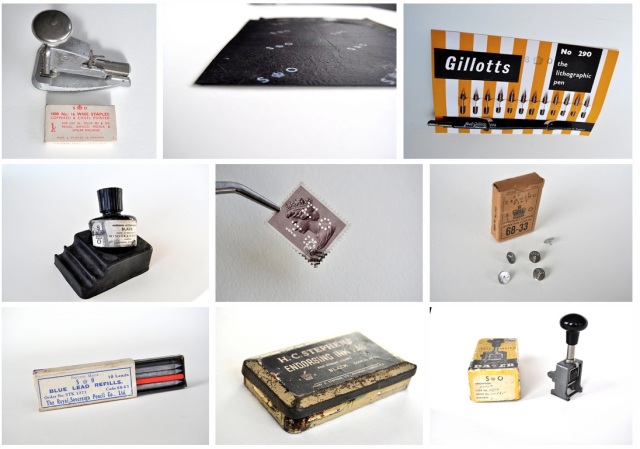I admit it. I have a typewriter collection. All my machines are manual typewriters, no power needed other than my fingers bashing about on the keys and a good ribbon.
When one must describe a portion of the collection and the “upstairs” typewriters, clearly there’s some typewriter hoarding going on here. The “upstairs” typewriters are mostly functional, though the Royal Royalite is being moved downstairs until I can get it fixed, or at least looked at by a professional to see if its worth fixing. The others are diamonds, or at least diamonds in the rough.

After getting my new Lettera 22, I just had to see how much overlap there is in the collection and was pleasantly surprised to discover there isn’t any. Okay, technically, there is a “spare” super-wonky Hermes Rocket in the basement that needs to be repaired but that’s the only case where I have two of the same machine. But, seriously, no self-respecting typewriter collector would ever walk away from an Hermes Rocket. Nope. Not a chance.
So, would you like to see how these all type?

This is the wonkiest of the bunch, the Royal Royalite but I love the typeface so much I’m willing to see what it would take to fix it up. Besides, it has one of the most beautiful shapes of all my manual typewriters. I bet Mary Tyler Moore, or maybe Rhoda would have typed on a machine like this.

This is my newest acquisition, the Lettera 22. It needs a new ribbon but it has instantly made it into my top three typewriters. It requires a pretty light touch for a manual typewriter and has no noticeable flaws in performance. What a score this was!

I want to love this Hermes Rocket, I really do but it has a wonky ribbon advance and it cuts off the ink on uppercase letters. The ribbon might be too big for the machine or something but its been nothing but frustrating.

Oh, Adler Tippa, how I love you! This is my coup de gras of typewriters. It was in pristine condition when I bought it on Craig’s List and the cursive script face was a total bonus. This is one of those items I’d be sure to grab if there was a fire/tornado/etc.

I think the only flaw of the Empire by Smith-Corona is that it was never really used and could use some oil. Otherwise, its a little trooper with some sticky keys.

My Brother/Webster is not the prettiest machine in the house, even with its shiny blue paint, but it has been a workhorse. I found it at a thrift store and paid $20 at the time which my dear husband thought was ludicrous. Poor delusional boy. The red ink is running dry on the ribbon but this machine stills gets used more than any other.
Do you have a typewriter? Or several?










































































